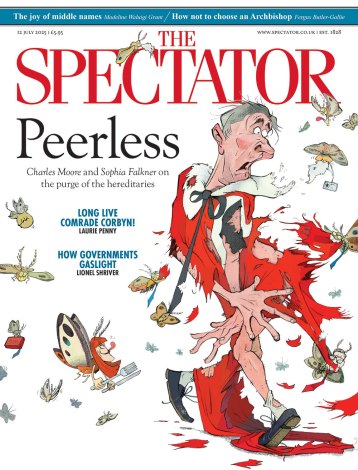Raymond Chandler once said that ‘the detective story, even in its most conventional form, is difficult to write well. Good specimens of the art are much rarer than good serious novels.’ This holds true for genre writing generally. Historical fictions, like murder mysteries, can often be dismissed as the thoughtless product of the hack, not the artist. For every ‘good specimen’ (and one might nominate Gore Vidal and Hilary Mantel as practitioners of this art), there are shelves groaning with the mediocre, the outright bad, and even the so-bad-it-is-good (Dennis Wheatley).
Andrew Taylor, an expert in the realm of murder and mystery fiction (he reviews crime novels for this magazine), must know the potential pitfalls. The Scent of Death is a triumph of genre plotting: a detective story, and a piece of period writing that excites and surprises in equal measure.
The success of historical detective fiction rests largely on the choice of period and detective. Taylor has been wise in both respects. His story begins in New York on 2 August 1778, during the ‘strange and unnecessary’ American War of Independence. Fresh off the boat from England to a city effectively under siege by ‘rebels’ is Edward Savill, a civil servant from the American Department, whose brief — to ‘report on the administration of justice in the city in all its aspects’ — places him in a convenient position to investigate any suspicious murders that might occur during his stay.
He is presented with a case immediately: the murder of a man connected to his host’s family (the ancient Judge Wintour, his come-hither daughter-in-law Arabella, and her flighty husband Jack), who may hold the secret to a mystery embodied in a ‘box of curiosities’ that everyone seems keen to get their hands on. This box is what Alfred Hitchcock called a ‘MacGuffin’, a helpful plot device that gives something dramatic for each character to chase. It leads us to buried treasure, a burned-out slave plantation and a family squabble over castration and miscegenation.
This is all set against the backdrop of a civil war that has turned New York and its environs into an apocalyptic wasteland. Many passages are shocking in their depiction of ‘a scene that might have come from the last days of the world’. Outside the city centre is the ‘Debatable Ground’ (an area that could have been imagined by J.G. Ballard, fought over by roving gangs), and inside there is the ‘heaving, shouting, stinking mass of humanity’ of a crammed, starving population who lived ‘like wild animals, without rights, without shelter and, worst of all, without hope’.
It will be clear that Taylor is not afraid of unsubtle phrasing. Some of the novel’s momentum comes from the old Victorian trick of ‘curtain lines’ which end each chapter with something enticing (‘I admitted the truth to myself: I was in love with Mrs Arabella Wintour’), and brief chapter openings that impel one onward (‘I took out the axe. The edge of the blade glinted in the moonlight’).
There is something admirably professional about this sort of writing. And not only because of the pains taken to get the period right. Taylor also recognises that successful page-turners — those true specimens of Chandler’s art — come from the author removing himself from view and simply concentrating on telling a story that keeps readers interested to the end. In this respect, The Scent of Death undoubtedly and thrillingly succeeds.





Comments